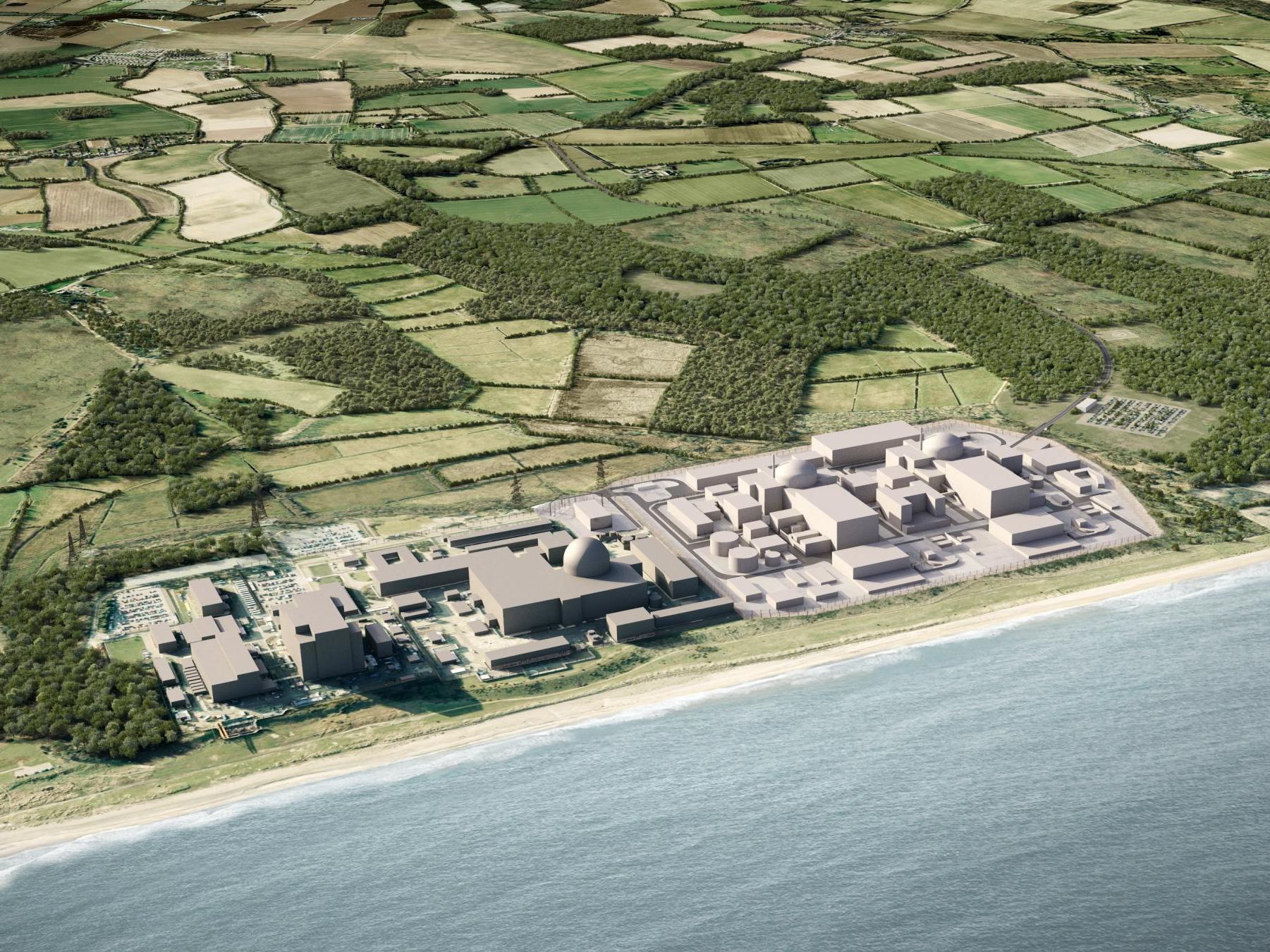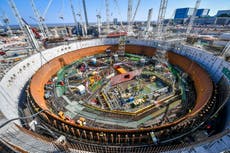Sizewell C talks could leave us with another horribly expensive nuclear white elephant
Hinkley Point C is still not producing power and its electricity will be horribly expensive when it does – sometime in the middle of the decade. James Moore explains why the nuclear numbers simply don’t add up


Only a government led by someone like Boris Johnson could manufacture the following series of events:
11 December: reports emerge that royal navy ships will be ready to patrol the UK’s territorial waters from 1 January in the event of a no-deal Brexit. There are warnings that French fishermen could be arrested and have their boats impounded.
12 December: Johnson uses his slot at the UN climate summit to urge the UK to become the “Saudi Arabia of wind energy” while stressing its 10-point plan for a “green industrial revolution”.
14 December: the government begins talks with French power company EDF about a new £20bn nuclear power plant, Sizewell C, to be built next door to nature reserves in Suffolk. EDF is majority owned by the French government, whose fishermen the UK is (potentially) planning to clap in irons.
What’s that phrase again? That’s it: you couldn’t make it up. But “merde alors” would do just as well.
Hang on a minute, the government would probably say. Set aside the stuff about sending gunboats after the countrymen of the people building our nuclear power plant, and there’s no contradiction between the prime minister’s speech and Sizewell C. On the contrary: nuclear power is part of our low-carbon future. The wind doesn’t always blow, you know.
It’s true that there are environmentalists out there who have concluded that nuclear, while hardly an example of clean energy, is a lot less damaging than venting gazillions of tonnes of CO2 into the atmosphere and letting the planet burn as a result. There was a stage at which I had some sympathy for this view.
That was before the advances in the generation of energy from renewable sources turned green power into today’s economic express train. Meanwhile, the financial mess at Hinkley Point C, the UK’s first nuclear plant for a generation, has been looking more and more like a train wreck.
Fun fact: Hinkley was actually supposed to start putting out power this year. As things stand, the National Grid will be lucky if it gets the first kilowatt out of the thing by the middle of the decade. Really lucky. Delays and cost overruns have become commonplace in a project that it is now estimated will cost twice what it took to put on the London Olympics (more than £20bn and counting).
Anyone who thinks Sizewell C is going to be any different has been taking far too many happy pills, while wilfully ignoring the government’s record when it comes to these projects. That’s before you even get to the prime minister’s dismal personal history with white elephants, such as London bridges that cost millions but never get built.
Care to guess who’s ultimately going to pay for Europe’s priciest power plant? That’s right: it’s you and me. It’s the energy consumer.
UK electricity is currently priced at about £52 per megawatt hour (MWh) on the wholesale markets. Bear in mind that demand is quite high at the moment because, obviously, it is winter.
Meanwhile, EDF was guaranteed £92/Mwh from Hinkley as an incentive to press ahead with a project that led to board level resignations because of doubts over the financial risk that the company was still taking on.
It’s quite true that energy prices go up and down, but the amount of energy provided by renewables is going up and up, and renewable energy is cheap energy. The market would really have to catch the wind in its sails for wholesale prices to approach that £92.
Trade body Renewables UK is currently projecting that 75 per cent of the UK’s power requirement could come from renewable sources as part of a net-zero 2050 strategy.
That does, of course, mean 25 per cent has to come from somewhere else. But here’s the thing about the industry that Renewables UK represents: it’s been making best-case scenarios look better by the day for years now.
Had you made a projection like that a decade ago you’d have been laughed at, maybe even called a hopelessly naive tree-hugger. No one’s laughing now that the renewables industry is turning science fiction into science fact daily.
Advances in technologies – such as battery storage, the use of renewable hydrogen, energy parks utilising multiple renewable sources for when the wind doesn’t blow – could ultimately make its projections look conservative in a few years’ time. Sizewell C would, in that scenario, stick out like a sore thumb. An even sorer thumb than Hinkley C? It’d have to go some to achieve that, but you can’t rule it out.
The government has got this one wrong – and it’s rather making a habit of that. If there’s a crumb of comfort for energy consumers, at the risk of paying the price for ministers’ errors for years to come, it is that they have also been making a habit of blowing up negotiations. So Sizewell C might not happen.




Join our commenting forum
Join thought-provoking conversations, follow other Independent readers and see their replies
Comments